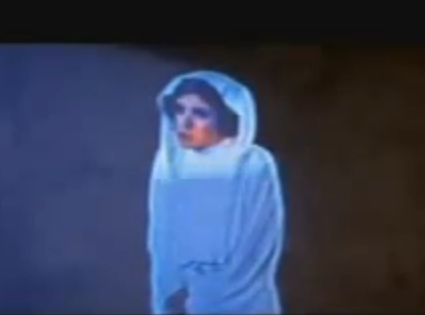When you see a sci-fi movie, one of the most important tasks of the special effects designers is to convey to you, on a gut level, that some actual mechanism is at work behind the technological marvels you see. If the filmmakers are really good, this is accomplished in a completely sensory way — through visuals and sound — without the need for any supporting dialog at all. If the result is successful, you come away with a feeling that some unknown technology is causing the things you see on screen — a technology that is perfectly consistent with the world of the film and its governing logic.
One of my favorite examples of this being done well is the work John Dykstra and his team did on conveying the idea of some sort of holographic display technology. The most famous use of this is in the scene where R2D2 projects a holographic recording of Princess Leia. The more I look at this clip, the more brilliant it seems, as an example of the art of special effects.
For one thing, there was no attempt to make it look “good”. Rather, the filmmakers realized the trick was to go the other way, by making it look like an unperfected technology. All the little glitches and missed frames tell us, on a subliminal level, that this is a “real” transmission system.
I especially like one particular artifact: A bright horizontal band keeps moving up and down the image. Subliminally, this is telling us that some sort of scanning projection technology is being used, and that this scanning process has a frame-rate that is interfering with, or “beating” against, the frame-rate used by the movie camera of the film we are watching:


Audiences don’t generally know very much about film technology, but they do know that certain kinds of motion can create interference patterns on the movie screen. We’ve all seen this effect in movies, in things like the spinning wheels of automobiles and bicycles. There probably isn’t one audience member in a hundred who could accurately describe how and why this happens, but every audience member has seen it.
Dykstra and his team used this tacit audience awareness to create a visual artifact that could plausibly have been caused by some unknown sci-fi projection technology — if that projection were being filmed by a 20th century movie camera.
Just take a moment and think how crazy brilliant that is.

